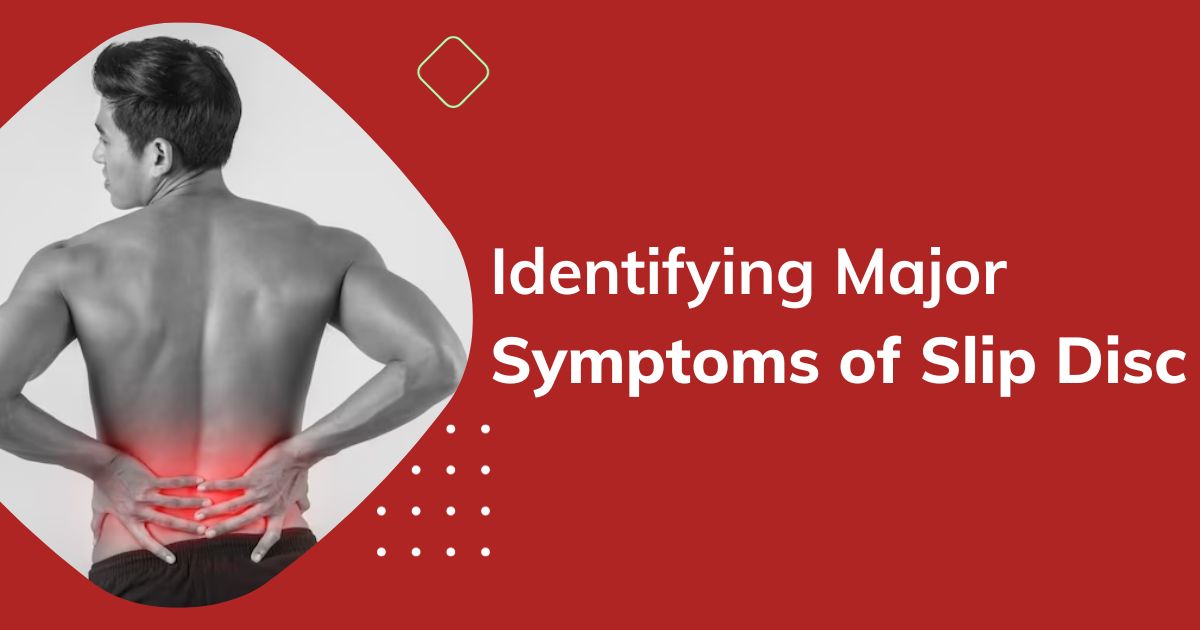
Our backs are like superheroes, holding us up and helping us move around. But sometimes, even superheroes can get hurt. That’s where slip discs come in. They’re like when the inside of a special part of our back pushes out a little. This can make our backs feel sore and uncomfortable.
When our backs have a slipped disc, there are signs we can watch out for. First, there’s pain in one spot, like the lower back or neck. It can feel sharp and spread to other places. Then, our arms or legs might feel tingly or numb, like when they fall asleep. We might even have trouble moving some muscles or notice changes in how fast we react.
Sometimes, doing simple things like bending or lifting stuff can make the pain worse. It might even be hard to walk or stand straight. That’s when we know something might be wrong with our backs and it’s important to talk to a doctor.
But don’t worry! There are special places, like Gokuldas Hospital, where doctors know all about backs and how to help them feel better. They have amazing machines and really smart people who can figure out what’s wrong and make a plan to help fix it. So, if our backs ever feel strange, places like Gokuldas Hospital are there to save the day!
Localized Pain:
A slipped disc often manifests through intense, pinpointed pain, characterized by a sharp or shooting sensation. This discomfort typically originates from the impacted area of the spine, which could be the lower back, neck, or any segment along the spine’s length. The pain may persist and radiate outwards, affecting nearby muscles and nerves.
Numbness and Tingling Sensations:
The pressure exerted by the herniated disc on nearby nerves can induce various sensations such as numbness, tingling, or a pins-and-needles feeling. These sensations may extend from the immediate affected area to other regions, such as the arms or legs. The severity and range of these feelings often depend on the specific location of the slipped disc.
Muscle Weakness:
Nerve compression resulting from a slipped disc can lead to muscle weakness or difficulties in controlling specific muscle groups. This weakness might impede various activities involving those muscles, such as lifting objects, walking, or maintaining a firm grip.
Changes in Reflexes:
Another indication of a slipped disc can be alterations in reflex responses. Diminished reflexes, particularly in the affected area, may indicate nerve compression caused by the herniated disc. Such changes in reflexes can serve as a significant sign of the condition.
Exacerbation of Pain with Movement:
Routine activities that involve bending, lifting, or twisting may intensify the pain associated with a slipped disc. Mundane movements that would typically cause no discomfort might become excruciating due to the pressure exerted on the nerves by the herniated disc.
Difficulty in Walking or Standing:
In severe instances, a slipped disc can severely impede basic movements such as walking or maintaining an upright posture. This hindrance may stem from nerve compression that affects the lower body, leading to substantial discomfort and difficulty in performing day-to-day tasks.
Early detection and care are pivotal when suspecting a slipped disc. Seeking prompt medical attention is crucial to address the issue effectively. A healthcare professional will typically begin with a comprehensive physical examination to evaluate symptoms and perform specific tests to assess nerve function, muscle strength, and sensation in the affected area.
To confirm the diagnosis, imaging tests like X-rays, MRIs, or CT scans may be recommended. These imaging techniques provide detailed insights into the spine’s condition, helping to identify the location and severity of the disc displacement.
Once diagnosed, treatment strategies are tailored to the individual’s condition. Initially, conservative approaches are often recommended. These might involve a period of rest, avoiding activities that exacerbate symptoms, and adopting ergonomic adjustments to reduce strain on the spine. Physical therapy plays a crucial role, focusing on exercises to strengthen the muscles supporting the spine and improve flexibility.
Pain management through medication, such as nonsteroidal anti-inflammatory drugs, muscle relaxants, or in some cases, epidural steroid injections, may be prescribed to alleviate discomfort and inflammation.
In instances where conservative treatments prove ineffective or if there are persistent neurological symptoms like severe weakness or loss of bowel or bladder control, surgery might be considered. Surgical procedures aim to alleviate pressure on the affected nerve roots or spinal cord by removing the protruding disc material or stabilizing the spine.
Regular follow-ups and adherence to the healthcare provider’s recommendations are essential for monitoring progress and ensuring appropriate care throughout the recovery process. Early intervention and a comprehensive treatment plan significantly improve the chances of managing and alleviating symptoms associated with a slipped disc.
Conclusion:
Identifying these symptoms early on is crucial for prompt diagnosis and appropriate treatment. Consulting a healthcare professional upon experiencing any of these signs can prevent further complications and aid in effective management. Facilities like Gokuldas Hospital, renowned for their specialized spine care units and experienced medical professionals, offer comprehensive diagnostics and personalized treatment plans for individuals grappling with slipped disc concerns.
Amidst the myriad of medical institutions, Gokuldas Hospital shines as a beacon of excellence in spinal care. Their state-of-the-art facilities coupled with a team of seasoned specialists ensure that patients dealing with slip disc problems receive the best care and guidance possible. Through a combination of advanced diagnostics and tailored treatment approaches,
Gokuldas Hospital stands firm in its commitment to restoring the spinal health of individuals, ensuring they can stand tall and walk without the burden of slipped disc-related discomfort.
In the intricate web of spinal health, identifying the symptoms of a slipped disc acts as the first crucial step toward effective management.
Watch this video: